Feature
Shape, Bake, and Grow!
Taking to the outdoors in urban settings encourages plant knowledge and healthy lifestyles.
Science and Children—July/August 2020 (Volume 57, Issue 9)
By Shelly Counsell, Mary Palmer, and Felicia Peat
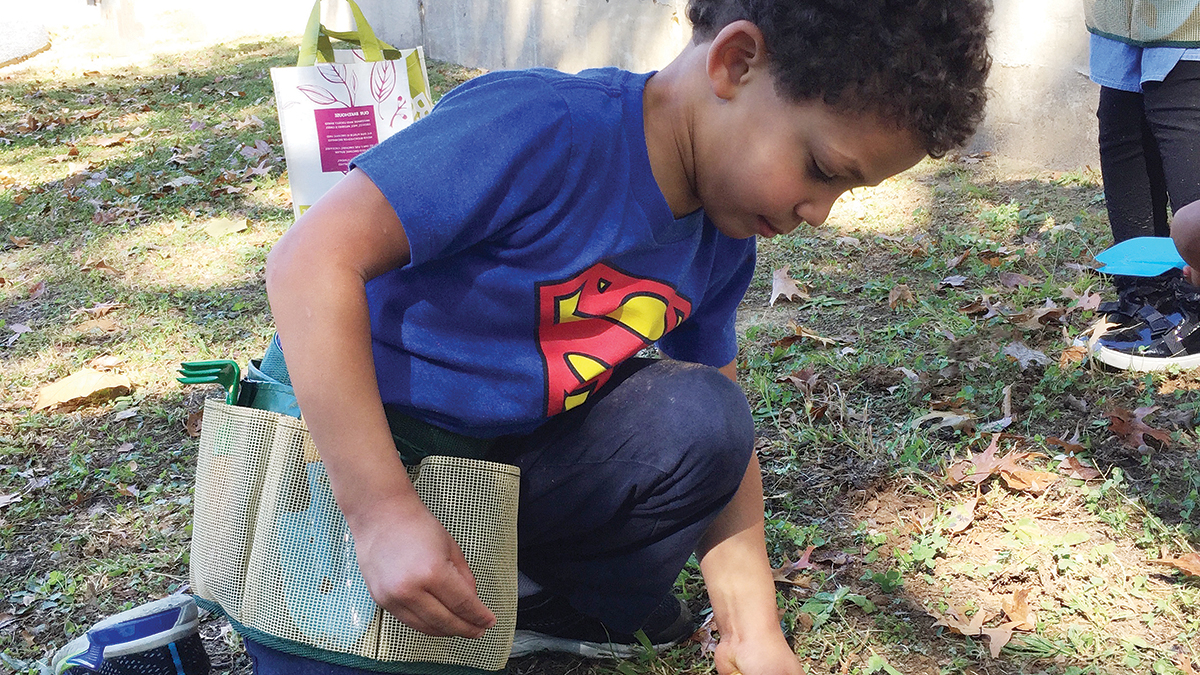
One of my fondest memories as a child was working alongside my parents in the garden. It wasn’t required work, but since I didn’t have a sitter or attend school, I worked right alongside with them. Those early years I learned about the outdoor environment. It was messy, fun and a time to play, work and discover. I learned about different types of soil, the best time for planting, various parts of plants, and the importance of water. I had a real outdoor classroom experience. My parents always answered my questions and allowed me to explore. It was a joy to spend so much time outdoors. On rainy days, it was not unusual to make mud cakes indoors. I imagined cooking and making various dishes with grass, rocks, and mud. Television and radio were not a big part of my early life. I was tuned into nature, learning from the natural outdoor classroom. I was free to build upon my experiences and discover why or how things worked. I connected to my environment by watching tomatoes grow on a vine, pick and eat them from the garden. Working alongside my parents outside allowed me to plug into my very own outdoor learning lab. (Former Preschool Teacher and Current Director, Campus Child Care Programs, SWTCC)
As young children encounter animal and plant life, they are eager to figure out where plants and animals come from, which plants are edible, and which animals like to eat different plants. Gardening experiences provide ample opportunities to explore how plants grow, what plants need to grow, how to care for plants, and how to harvest the edible parts of plants. The surrounding world is a child’s classroom, with endless opportunities for exploration and learning. In this article, we remind teachers and parents that opportunities to promote and support young children’s learning and development abound in the outdoors with learning experiences specific to STEM/STEAM (science, technology, engineering, arts, and math).
The Early Childhood Education Center at Southwest Tennessee Community College is located in an urban setting that largely serves students from low-income neighborhoods. In contrast to the College, the Center draws children and families from a wider spectrum with regard to socio-economic status, racial, cultural, and linguistic backgrounds. It has a long-standing history of proactive innovation and community activism on behalf of young children and families. Gardening can be a key classroom experience filled with investigation opportunities that actively support young children’s construction of meaningful and relevant mental relationships needed to make sense of their world and the role they can play to help care for it.
Project Inspiration
Helping young children and families make connections between growing food plants with making healthy choices can increase the likelihood of improved life outcomes. In 2014, Tennessee ranked 19th in the country for childhood obesity, with rates for young children (ages 2–4) at 14.9 percent, with a dramatic increase reported in 2016 for older children (ages 10–17) at 37.7 percent (Carmona 2003). In response to this growing epidemic, the Shape and Bake Program (Assisi Foundation Grant 2004–05, $25,000) was launched to provide meaningful, purposeful, and relevant hands-on experiences with preparing balanced, healthy, economically affordable, and time efficient meals that appeal to family members of all ages. While involved in meal preparations, parents simultaneously learned about developmentally appropriate exercise and gross motor activities they can engage with children to further promote children’s overall physical wellness and well-being.
Full STEAM Ahead with Shape, Bake, and Grow
The success of the Shape and Bake Program was a catalyst to expand. The Center partnered with the Early Childhood Education Program at the University of Memphis and a local public broadcasting station to develop and implement STEAM explorations and investigations with plant life in ways that would fully capitalize on learning opportunities and simultaneously maximize young children’s STEAM outcomes during a newly transformed Shape, Bake, and Grow Program with families.
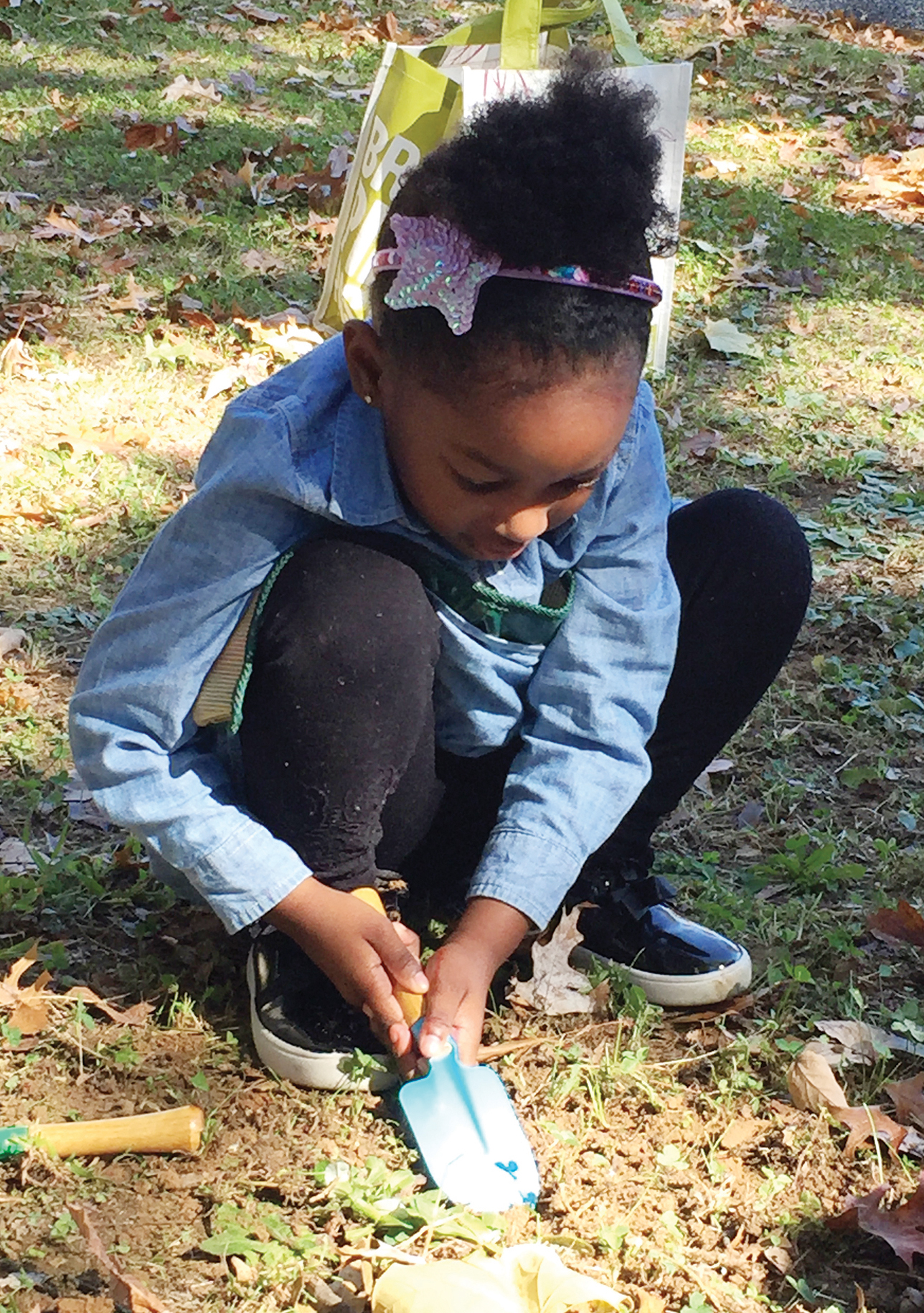
To support a STEAM focus with children and families, one group of teacher candidates prepared a unit of study on gardening. All three lessons were taught simultaneously one morning as small groups of three to four children rotated to each learning activity during center time. Materials were placed in the science center for children’s ongoing exploration during child-directed center time. Activities were videotaped for later viewing and discussion with parents. Parents received seed packets and clay pots to plant with their children at home. The gardening unit was organized into three key subtopics and:
What Plants Need to Grow
- Materials: One large watering pot, different seed packets (locally grown flowers and vegetables), small (child-size) hand trowel, and one clay flower pot per child
Planting Seeds
- Materials: One small watering pot, different seed packets (locally grown flowers and vegetables), container with rich soil, small (child-size) hand trowel, magnifying glasses, and one small clay flower pot per child
Parts of Plants
- Materials: Locally grown small flowered plants and magnifying glasses for each child
Evidence-based practices used in each lesson plan included a three-phase learning cycle: (1) exploration (children examining and exploring materials); (2) concept development (using the scientific terms as children explore materials and items such watering can, soil, stem, roots, and so on); and (3) application as children investigate the properties of seeds, parts of plants, and soil using magnifying glasses, eventually planting seeds in small pots. Children’s active engagement and higher-order critical thinking skills were further supported using productive questioning and Thinking Map graphic organizers (see Counsell, Peat, Vaughan, and Johnson 2015; Counsell, Jacobs, and Gatewood 2017; Counsell and Peat 2017).
Learning Activity 1: What Plants Need to Grow
The first learning activity encouraged young children to explore flower seeds, soil flowerpots, and a watering can. As children handled and examined the different items related to planting, the teacher candidate asked questions to help guide and inform children’s scientific thinking and understanding. Productive questioning included the following: Attention-focusing questions (e.g., What do you notice about the end of the spout?) Measuring and counting questions (e.g., How many seeds should you plant in the pot?) Comparison questions (e.g., How are the different seeds the same?) Action Questions (e.g., What will happen if you tip the bottom of the watering can higher?) Problem posing questions (e.g., “What will happen if we place the seeds in an empty flowerpot? Will they grow?) Reasoning questions (e.g., What do they need to grow?)
When asked, “What else do the seeds need to grow?”, children pointed to the soil and water can. Additional problem-posing and reasoning questions included, “Where are the plants in the classroom? Why are they placed near the windows? What would happen if we placed them in the cupboard and closed the door?”
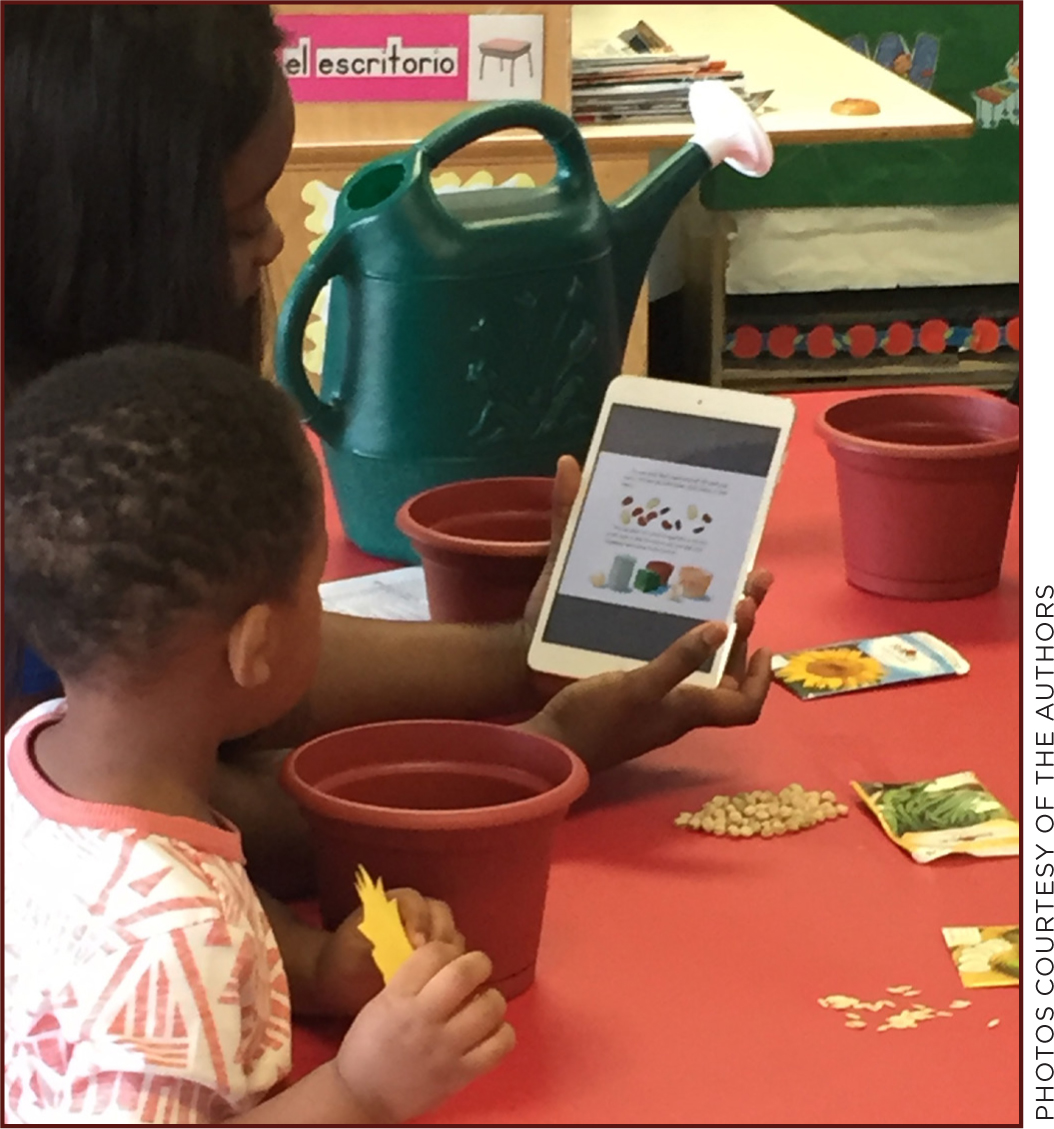
Some seeds require a magnifier to see! (left). A student explores what is needed for plants to grow (above).
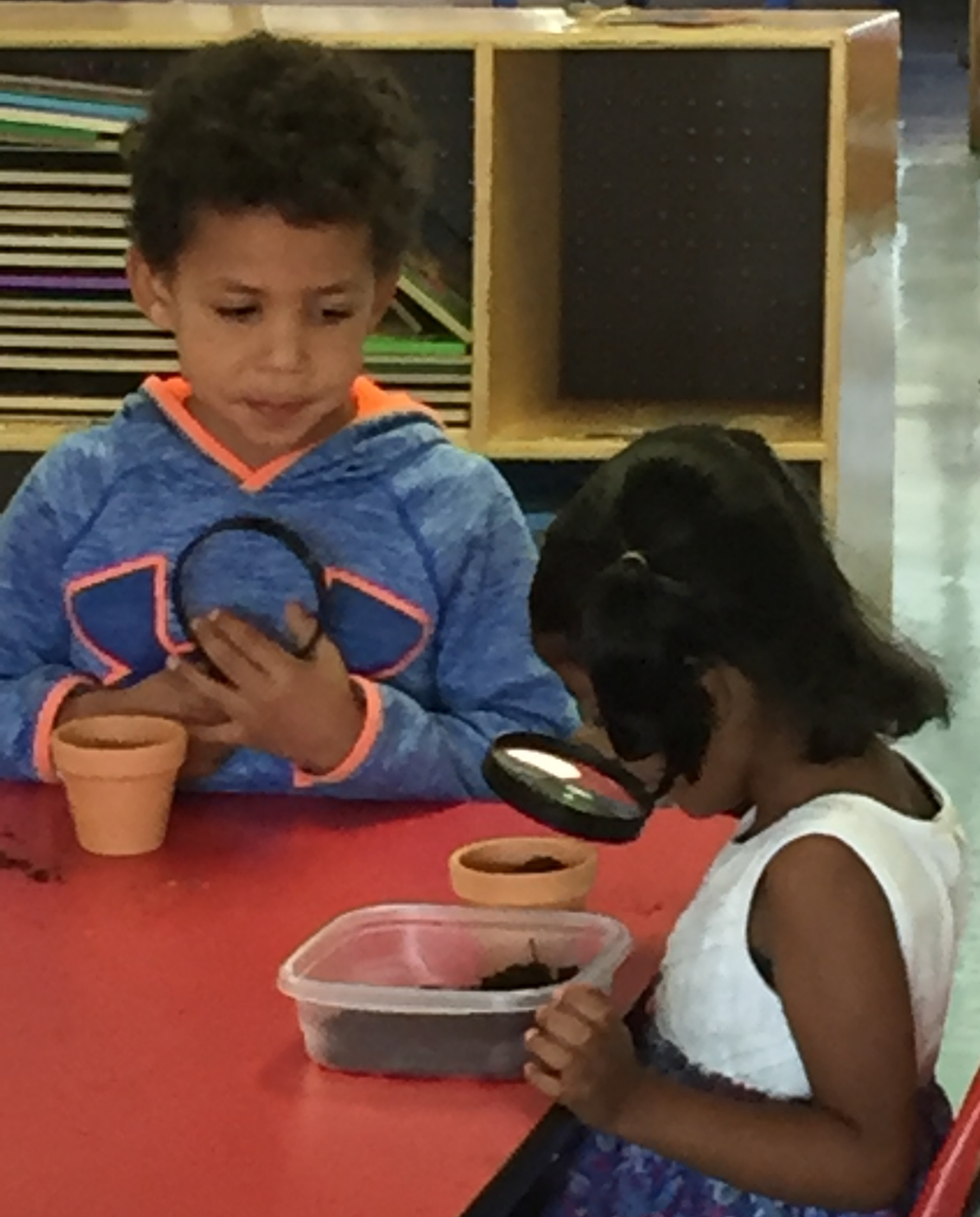
It is also interesting to look at soil up close.
Learning Activity 2: Planting Seeds
During the second learning activity, children examined and explored seeds and soil using a magnifying glass. Based on what children learned about the materials used during the planting exploration and what plants need to grow (i.e., oxygen, sunlight, and water) children applied this new knowledge and understanding as they planted seeds. Individually, children scooped soil into miniature flowerpots and then, using their fingers, they poked holes into the soil to plant their seeds. Children sprinkled water on the soil and placed their pots near the window for sunlight. As children examined the seeds and soil and eventually planted the seeds, the teacher candidate asked productive questions.
- Attention-focusing questions (e.g., What do you notice about the soil?)
- Measuring and counting questions (e.g., How many holes do you need to plant your three seeds? How much water do we want to add to help the seeds sprout?)
- Comparison questions (e.g., How is the soil different from the sand?)
- Action Questions (e.g., What will happen to the soil if we pour too much water?)
- Problem posing questions (e.g., “What will happen if seeds are planted too close together in the flowerpot?)
- Reasoning questions (e.g., Why do we want to place the flowerpots near the window?)
While young children enjoy planting seeds and eagerly check on their seeds to see whether they have germinated (sprouted), the impact of their actions are not immediate and take several days before children can begin to see the results of their efforts. For this reason, the third learning activity encouraged children to dissect already grown plants (in anticipation of the plants they eventually grow).
Learning Activity 3: Parts of Plants
As children dissected a plant, they touched, felt, smelled, and examined each grown plant and the different parts of the plant using magnifying glasses (exploration). As the children looked at each part of the plant (i.e., stem, leaves, roots, petals), the children named each part with the teacher candidate (concept development). Parents and children can further discuss the function or purpose of each part of the plant (e.g., roots extend into the ground and absorb water). Children were eager to touch and look at the different parts of flowered plants as the teacher candidate asked productive questions.
- Attention-focusing questions (e.g., What do you notice about roots?)
- Measuring and counting questions (e.g., How many leaves are on this plant? How long is the stem?)
- Comparison questions (e.g., How are these flowers different?)
- Action Questions (e.g., What will happen if we place the stem in water?)
- Problem posing questions (e.g., “What will happen if we place the plant in the cupboard?)
- Reasoning questions (e.g., Why do people place cut flowers in water?)
Children can investigate what happens when vegetables (like celery) and flowers (such as carnations) are placed into colored water as a follow-up activity with their parents to further expand their scientific knowledge and understanding and apply what they have learned about the various parts of plants and their function (application). As children investigate, they are encouraged to ask questions and make predictions about what will happen.
The six types of productive questions (Elstgeest 2001) modeled by the teacher candidates provide a useful framework that parents can easily implement to help promote children’s reasoning during explorations and investigations at home. Parents can learn to observe what their children do and listen to what they say in order to determine when to interject possible productive questions (i.e., attention-focusing, measuring and counting, comparison, action, problem posing, and reasoning) to facilitate learning without overwhelming the child’s thoughts or interfering with their child’s agenda (Counsell, Uhlenberg, and Zan 2013).
After the planted seeds in the flowerpots germinated, children used child-sized garden hand tools to prepare the soil and transplant the new seedlings into garden beds outdoors. Children love helping water, weed, cut, and prune plants and flowers and help harvest fruits or vegetables! Seeds can also be extracted from various flowers (like sunflowers), fruits (such as strawberries and watermelon), and vegetables (for example, cucumbers, peas, and green beans) and planted in an ongoing, continuous plant and harvest cycle according to the life cycle of each type of plant.
To assess and document understanding, children individually told and role-played the sequence of “how to plant a seed.” (For young children who have language delays or are dual language learners, children can sequence “how to plant a seed” using visual cards on a flow chart.) To assess children’s gained knowledge and understanding of the different parts of a plant, children completed a Thinking Brace Map, identifying each part of the plant using the correct scientific term verbally or in writing. This assessment also enables children to take apart and reassemble the plant with correct anatomical placement of each part (demonstrating both visual and spatial awareness). Using a felt board and pieces makes it easier for children to grasp and manipulate.
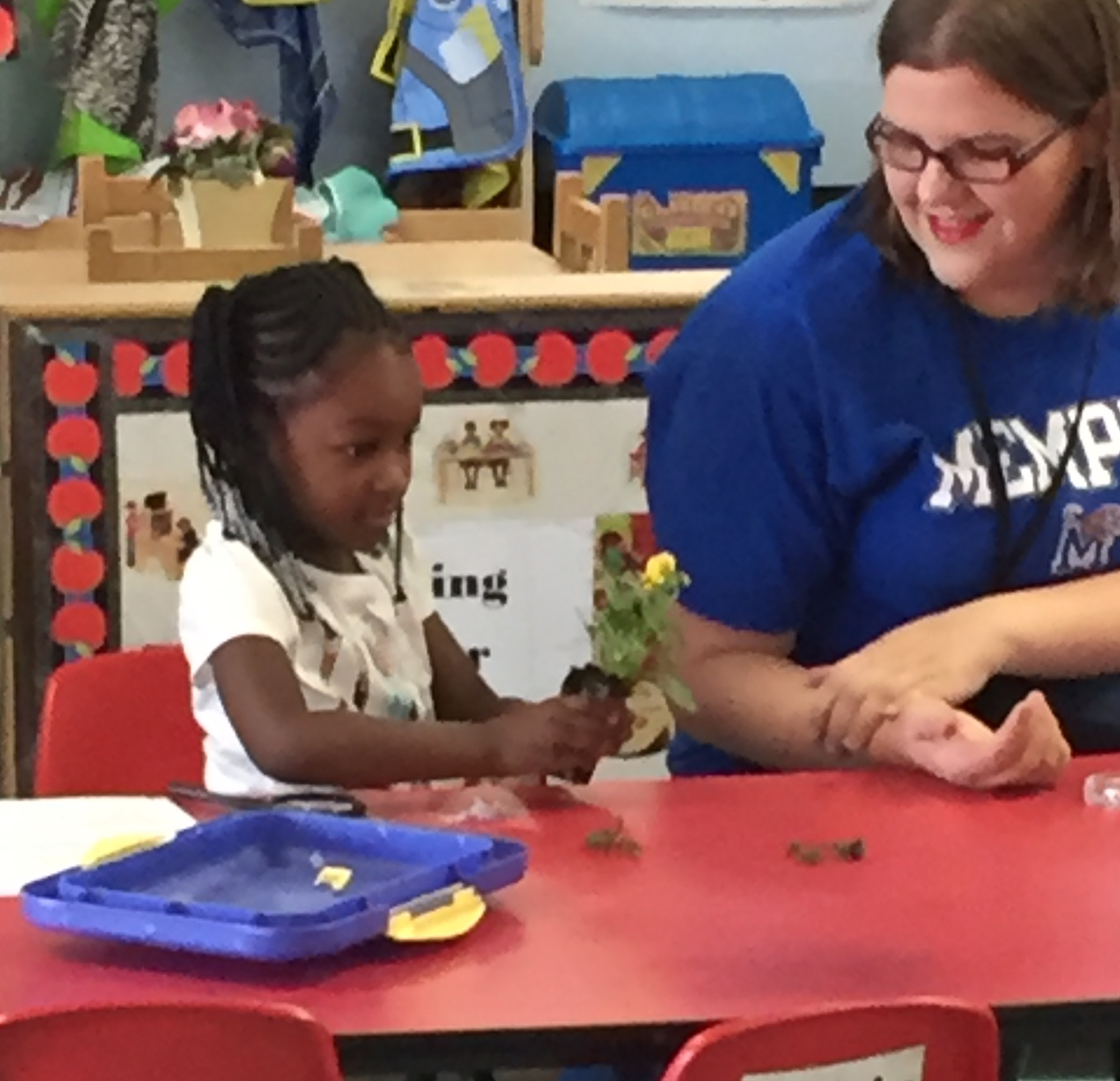
A girl practices using a watering can (left). The class discusses the parts of a plant (above).
PBS Kids Programming and Collaboration
Finally, the Bake, Shape, and Grow family program came full circle with the assistance of the local public broadcasting station to further broaden the scope and outreach beyond the early childhood education center at the community college campus. Mid-South PBS (WKNO) develops and shares engaging hands-on STEAM centered outreach programs and community events like the Bake, Shape, and Grow family program with underserved neighborhoods and local schools. The PBS Kids Programming is a recognized advocate and partner in providing quality educational workshops with young children, parents, and families in the greater Memphis area. Teacher-Teacher (our third author) is a WKNO children’s character beloved by young children and families in the surrounding area. Teacher-Teacher reads children’s STEM books on PBS programming. She visits local libraries, encouraging and supporting parents’ efforts with reading gardening stories with their children, as well as visiting local gardens, farms, florist shops, and grocery stores with children and parents. The long-term goal is to eventually telecast gardening and nutritional cooking demonstrations as training opportunities for parents, teachers, and preservice teacher candidates in the surrounding area.
Conclusion
As young children engage and use their senses to understand their world and everything in it, they actively construct mental relationships based on their interactions and experiences (e.g., cardinals are birds that are red and fly; acorns fall from oak trees and squirrels eat them). Young children are intrinsically curious, with a desire to figure out how the world works (Piaget 1981). STEAM activities support young children’s construction of knowledge as they openly engage in their surroundings and interpret their experiences in physical and social worlds (DeVries et al. 2002). This view that knowledge is not transmitted but actively constructed underpins contemporary perspectives on science education today. Early childhood educators, child care providers, and parents need to actively talk to children and ask questions to help guide and facilitate their thinking as they construct relationships about their surroundings and everything they encounter inside and outside the classroom setting. Preparing high-quality early STEM/STEAM educators require high-quality teacher preparation field experiences with young children, families, and communities. Altogether, the Shape, Bake, and Grow initiative provides a truly collaborative, multifaceted STEM/STEAM adventure that benefits everyone!
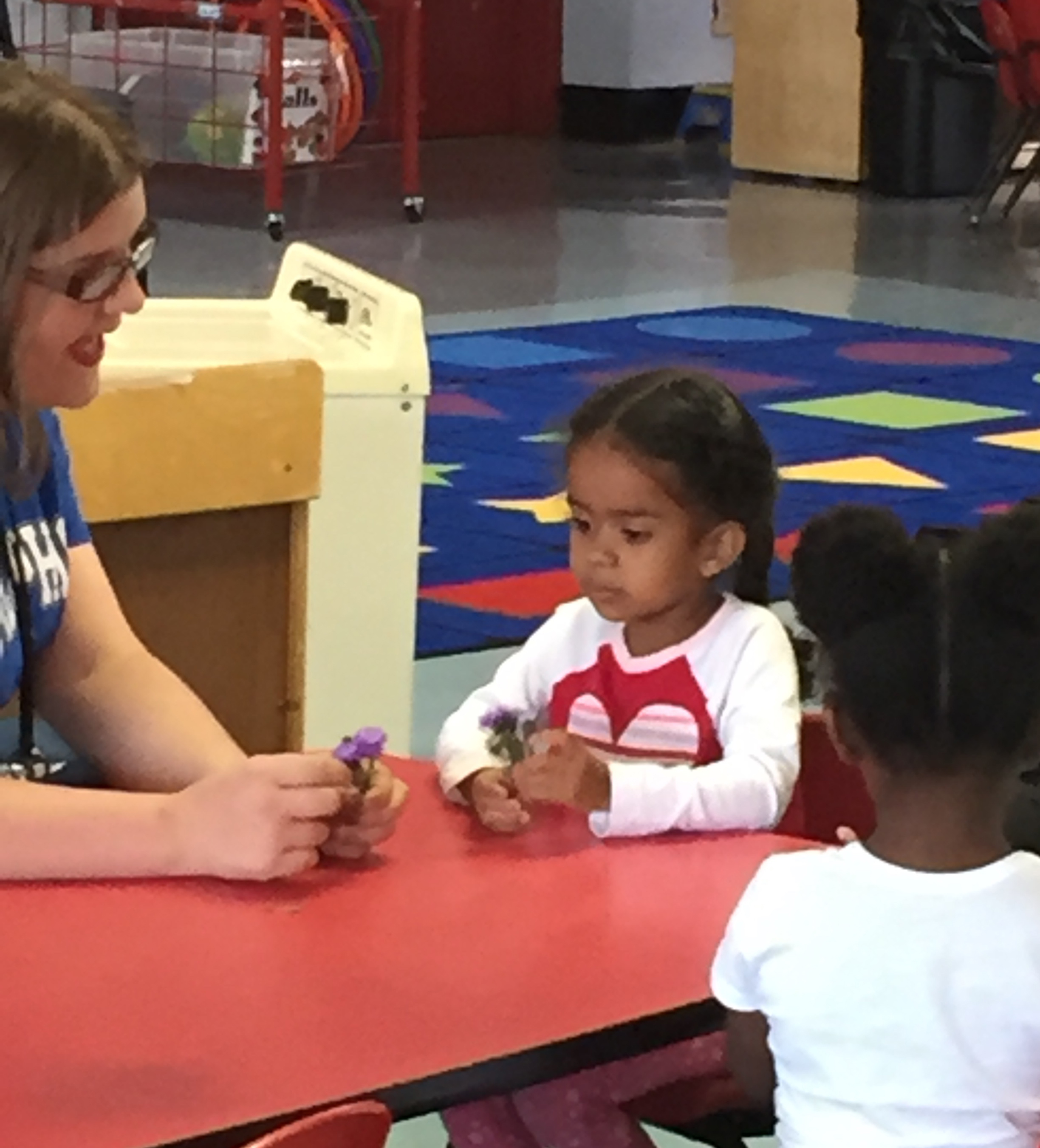
Flowers get close attention.
Shelly Counsell (slcnsell@memphis.edu) is an associate professor in early childhood education at the University of Memphis in Memphis, TN. Mary Palmer is the Director of Campus Child Care Programs at Southwest Tennessee Community College in Memphis. Felicia Peat is the Education and Outreach Manager of the 24/7 Kids Channel at WKNO Public Broadcasting Station in Cordova, TN.
Biology Environmental Science Life Science Early Childhood Elementary Preschool


